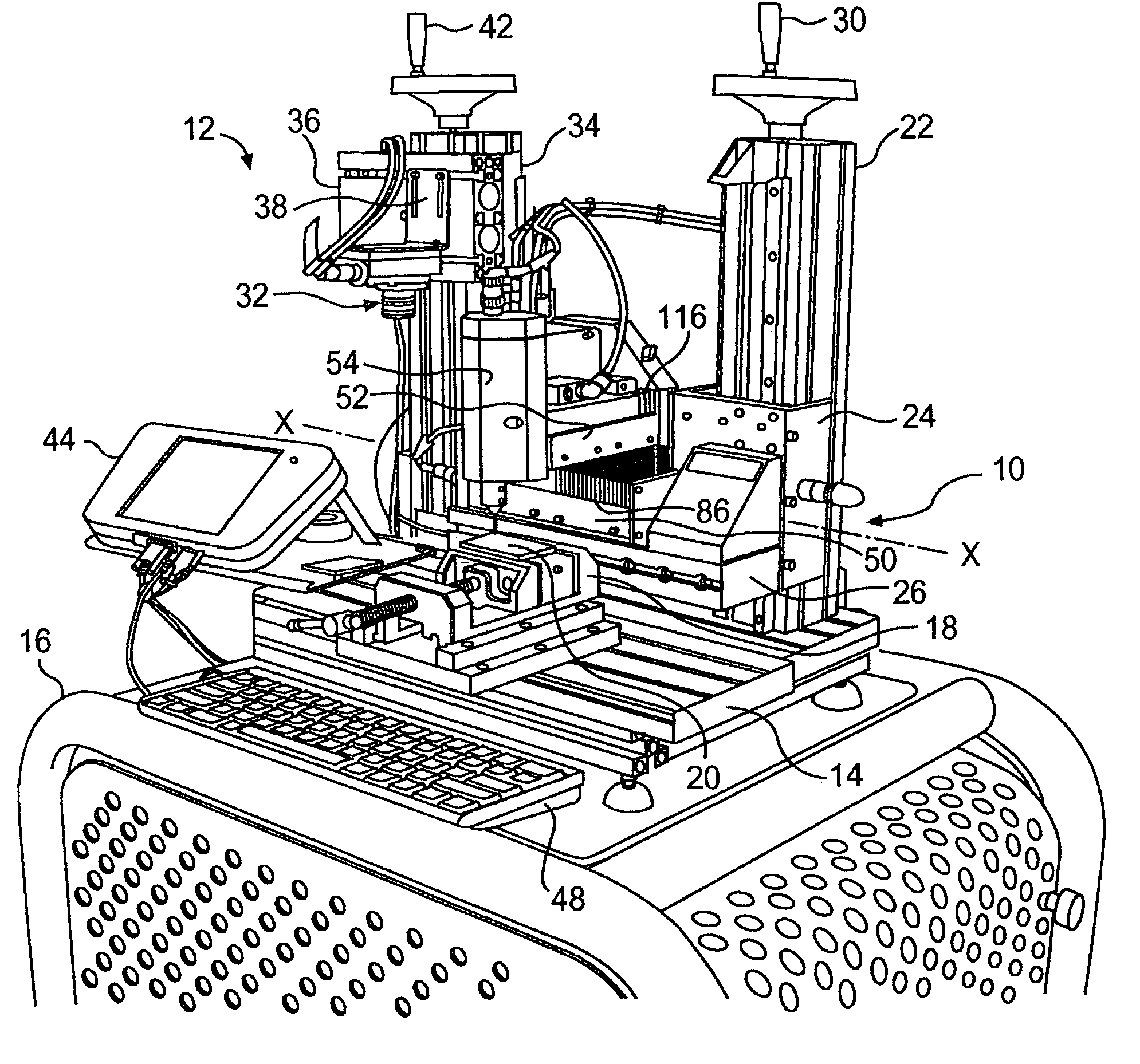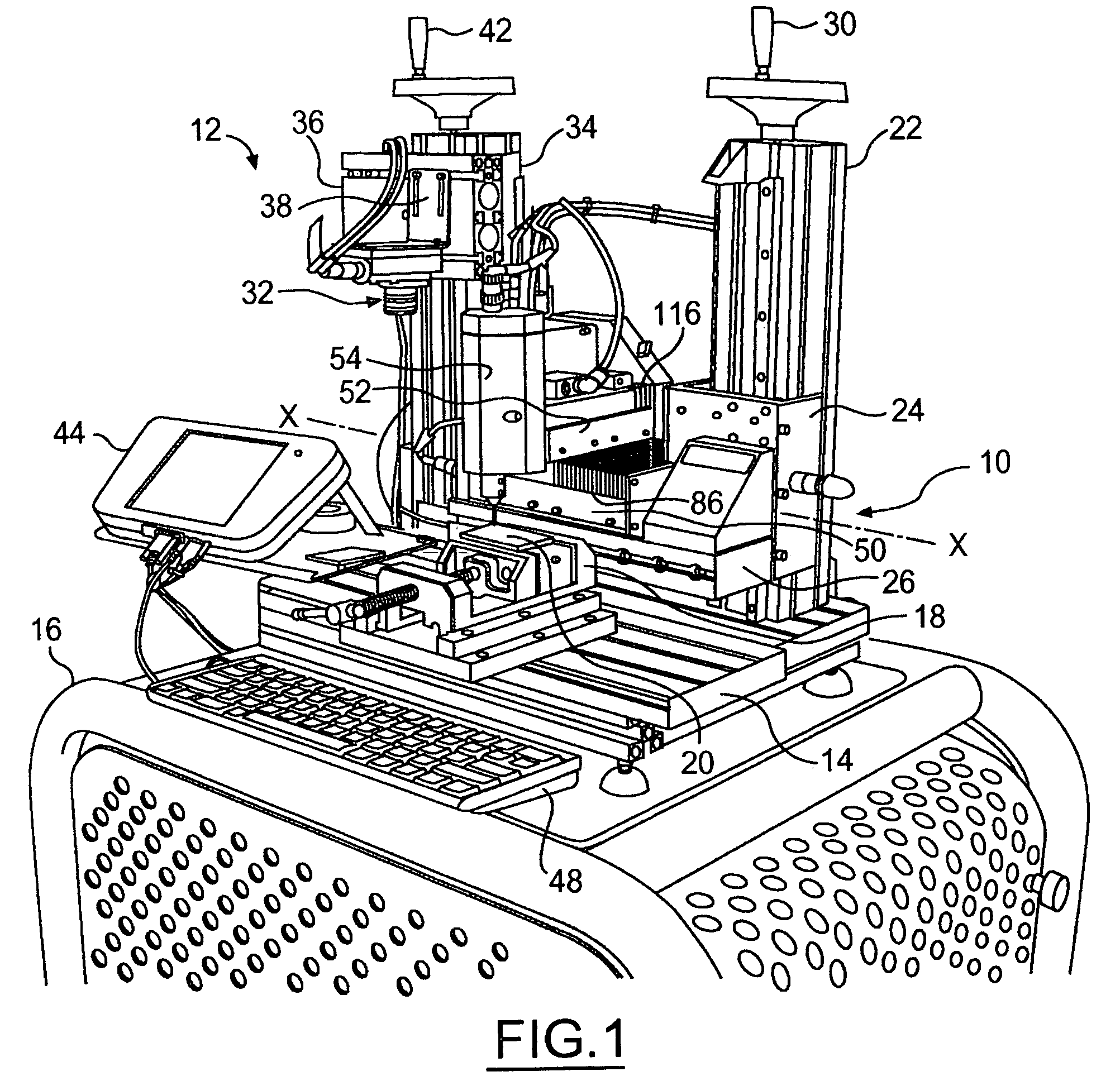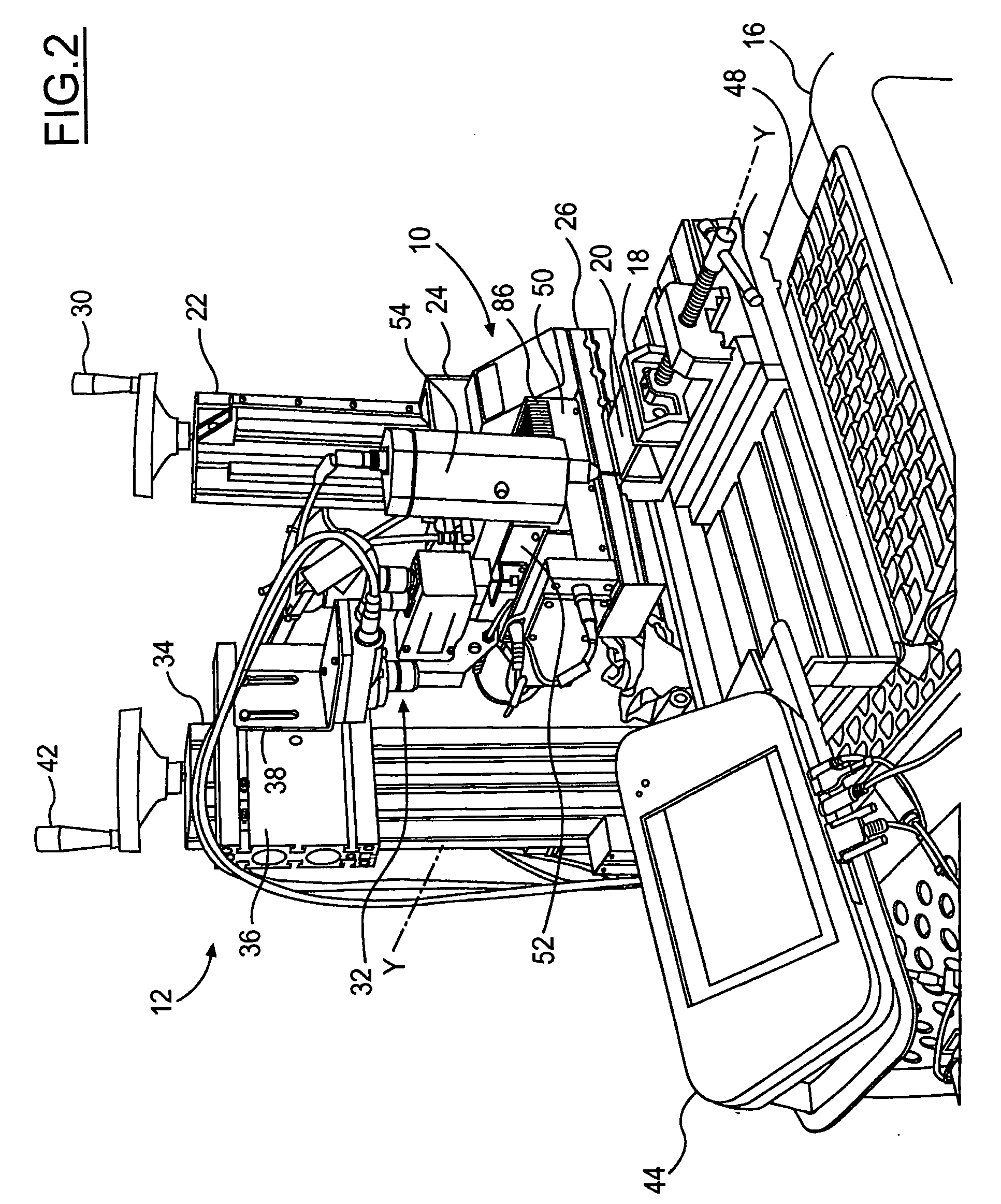Apparatus and method for controlling a programmable marking scribe
a scribe and scribe technology, applied in the field of marking scribes, can solve the problems of affecting identification accuracy and speed, additional manual effort when the marks are read, and the forms of marking often require manual effort when applied to marks
- Summary
- Abstract
- Description
- Claims
- Application Information
AI Technical Summary
Benefits of technology
Problems solved by technology
Method used
Image
Examples
Embodiment Construction
)
[0024]FIGS. 1, 2 and 3 show perspective views of the programmable marking scribe of the present invention. The marking scribe is generally indicated by the reference numeral 10 and is shown mounted on an apparatus exemplifying a marking station, generally indicated by the reference numeral 12. The marking station 12 includes a support base 14 mounted atop a stand 16. A workpiece holder 18 is mounted on the support base 14. The workpiece holder 18 is shown holding a representative workpiece, or part, 20; but it could be an object having a different size. A marking scribe support member 22 is shown extending upwardly from the support base 14, and a marking scribe slide 24 is shown slidably attached to the marking scribe support member 22. The marking scribe 10 is mounted on a marking scribe base 26, which is secured to the marking scribe slide 24. The marking scribe support member 22 has a marking scribe elevating screw 28 (best shown by FIG. 3) that is rotatable by a marking scribe ...
PUM
 Login to View More
Login to View More Abstract
Description
Claims
Application Information
 Login to View More
Login to View More - R&D
- Intellectual Property
- Life Sciences
- Materials
- Tech Scout
- Unparalleled Data Quality
- Higher Quality Content
- 60% Fewer Hallucinations
Browse by: Latest US Patents, China's latest patents, Technical Efficacy Thesaurus, Application Domain, Technology Topic, Popular Technical Reports.
© 2025 PatSnap. All rights reserved.Legal|Privacy policy|Modern Slavery Act Transparency Statement|Sitemap|About US| Contact US: help@patsnap.com



